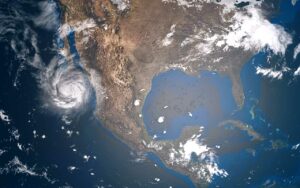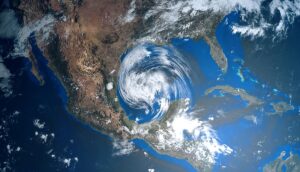Researchers said that concerns are growing over China’s nearly sole dependence on artificial snow for the Beijing Winter Olympics, which is creating water shortages for local residents. Is this a weather disaster in the making?
Artificial snow for Beijing Winter Olympics contrasts China’s green promises
China had pledged a “green” commitment to hosting the 2022 Winter Olympics in Beijing. Despite relying on coal to power nearly two-thirds of the country, China pledged to power the games using only wind, solar and Hydro energy, France 24 reports.
However, the games are being held at one of the driest places in the country, Channel News Asia reports.
The location of events such as skiing, snowboarding, and other outdoor events will be in Zhangjiakou and Yanqing.
The brown mountains of Yanqing receive minimal natural snowfall. According to a report by the International Olympic Committee, these areas “would rely completely on artificial snow.”
Local reservoirs are feeding about 300 turbines which are known as “snow guns.” These devices mix water with compressed air and propel the droplets into the air to form snow. From there, vehicles called “snowcats” spread the snow onto the pistes and sculpt jumps and turns.
Experts call actions unsustainable and irresponsible
Experts view the creation of artificial snow in such a dry, water-scarce region, as well as using large amounts of power and resources to do so as “irresponsible.”
“We could just as well hold the Olympics on the moon or on Mars,” said Carmen de Jong, a geography professor at France’s University of Strasbourg.
“To have Games in a site or region without snow is unsustainable since it is water- and energy-intensive, damages soil health, and causes erosion,” de Jong added. “To create events without the primary resource it depends on is not only unsustainable, it’s irresponsible.”
Artificial snow production creating water shortages
To supply the Winter Olympics with enough snow for events such as skiing and snowboarding, China has estimated it will require roughly 49 million gallons of water to create the artificial icy flakes, according to an estimate by the country’s economic planner.
According to a member of the Beijing Olympics organizing committee, the water will come from reservoirs in Zhanjiakou, “but would account for less than one percent of the water supply of the city.”
However, that report contradicts a 2020 study published in the science journal Nature, which warned that groundwater depletion in northern China was among the highest globally and was a “critical issue.” The factors include intensive agriculture irrigation, rapid urbanization, and a naturally dry climate.
According to the researchers in this study, this means that millions of Beijing residents’ water supply is likely to worsen in the future.
History of artificial snow at Olympics
The use of artificial snow during the Olympic Games is becoming the norm rather than the exception. According to the Guinness World Records, the first use of artificial snow occurred at the 1980 Winter Olympics in Lake Placid, New York.
Reportedly, artificial snow was used at the Winter Olympics of Vancouver in 2010 and Sochi 2014. Inside the Games reported, roughly 90 percent of the snow used at the Alpine skiing venue for the Pyeongchang 2018 Winter Olympics was reportedly artificial.









